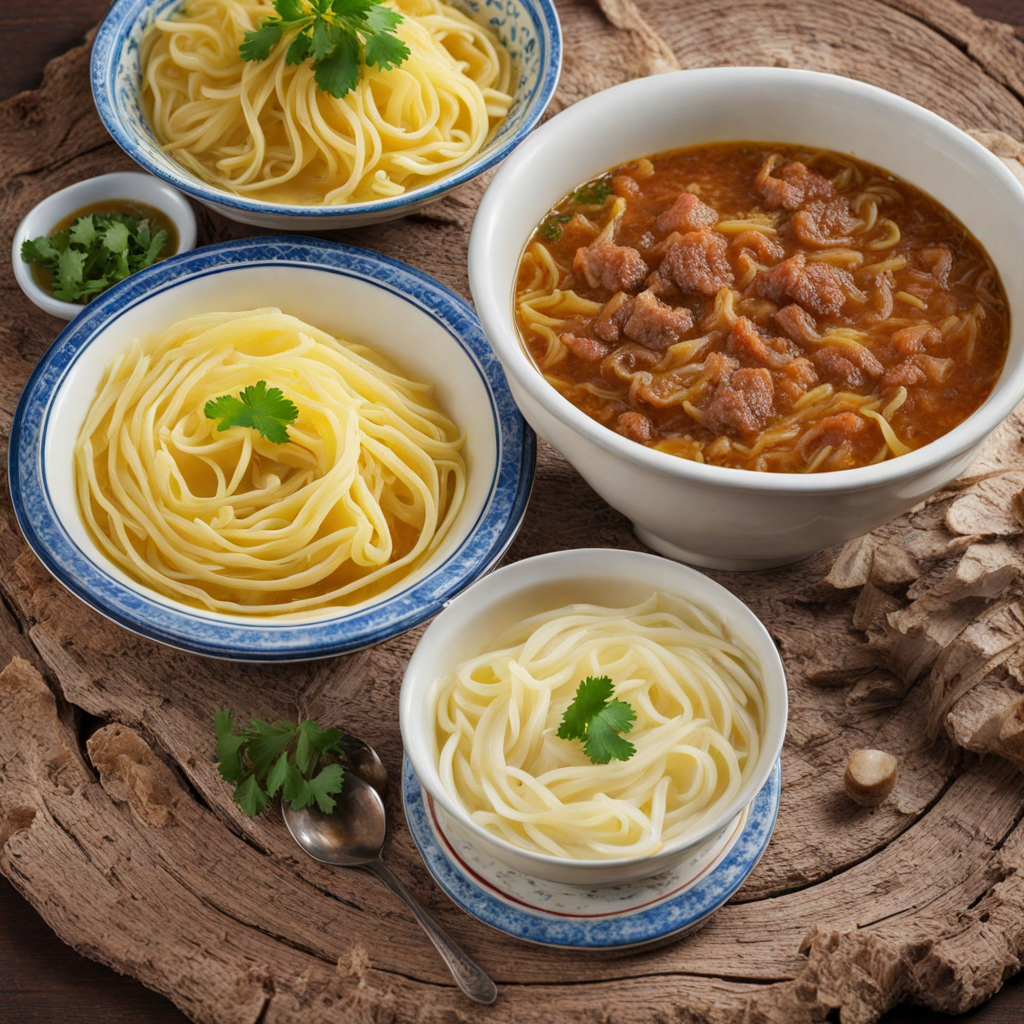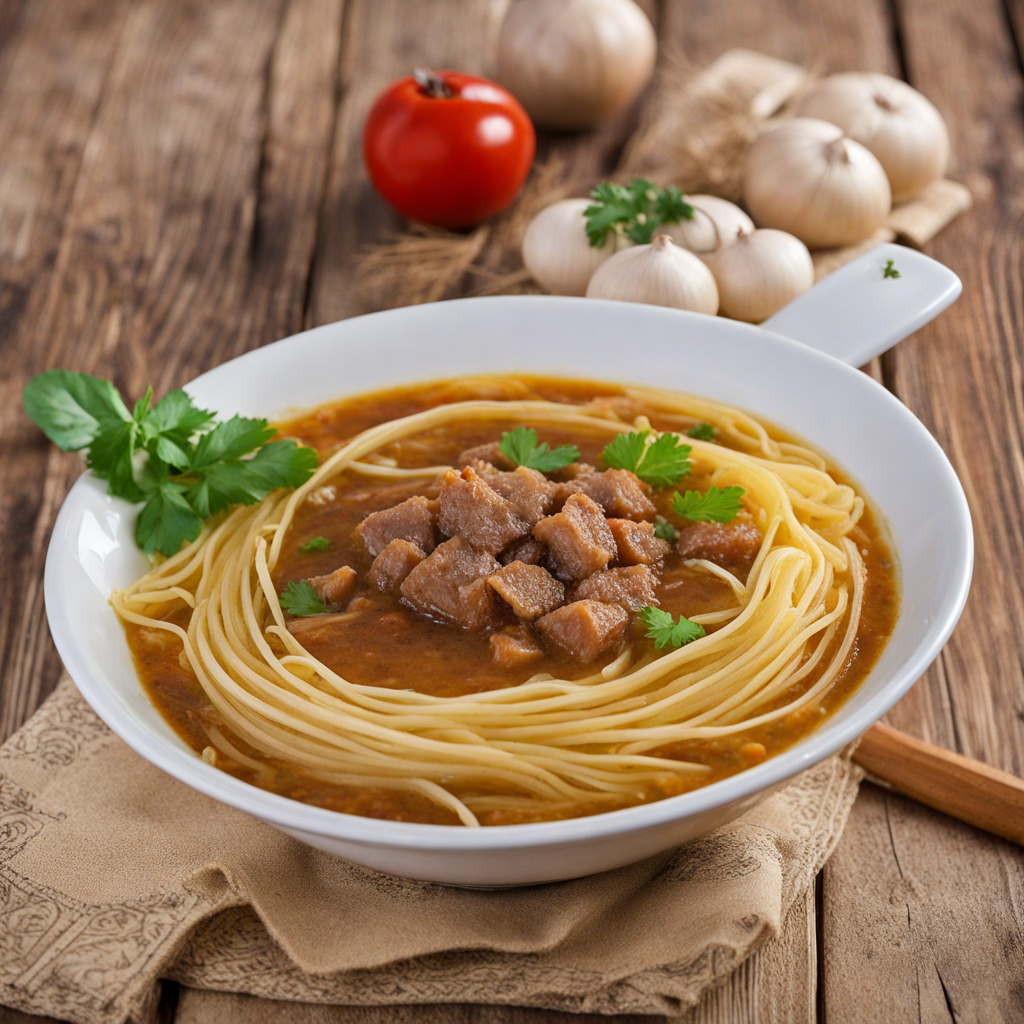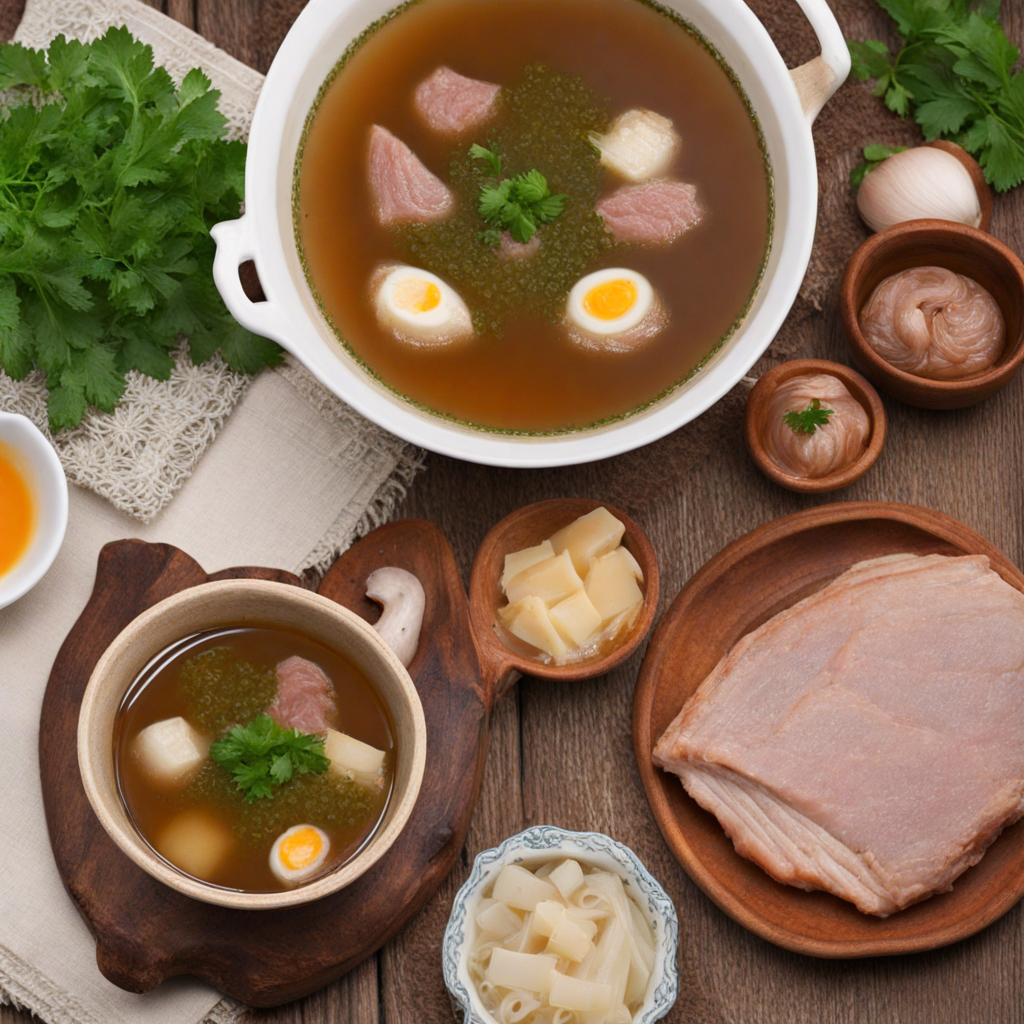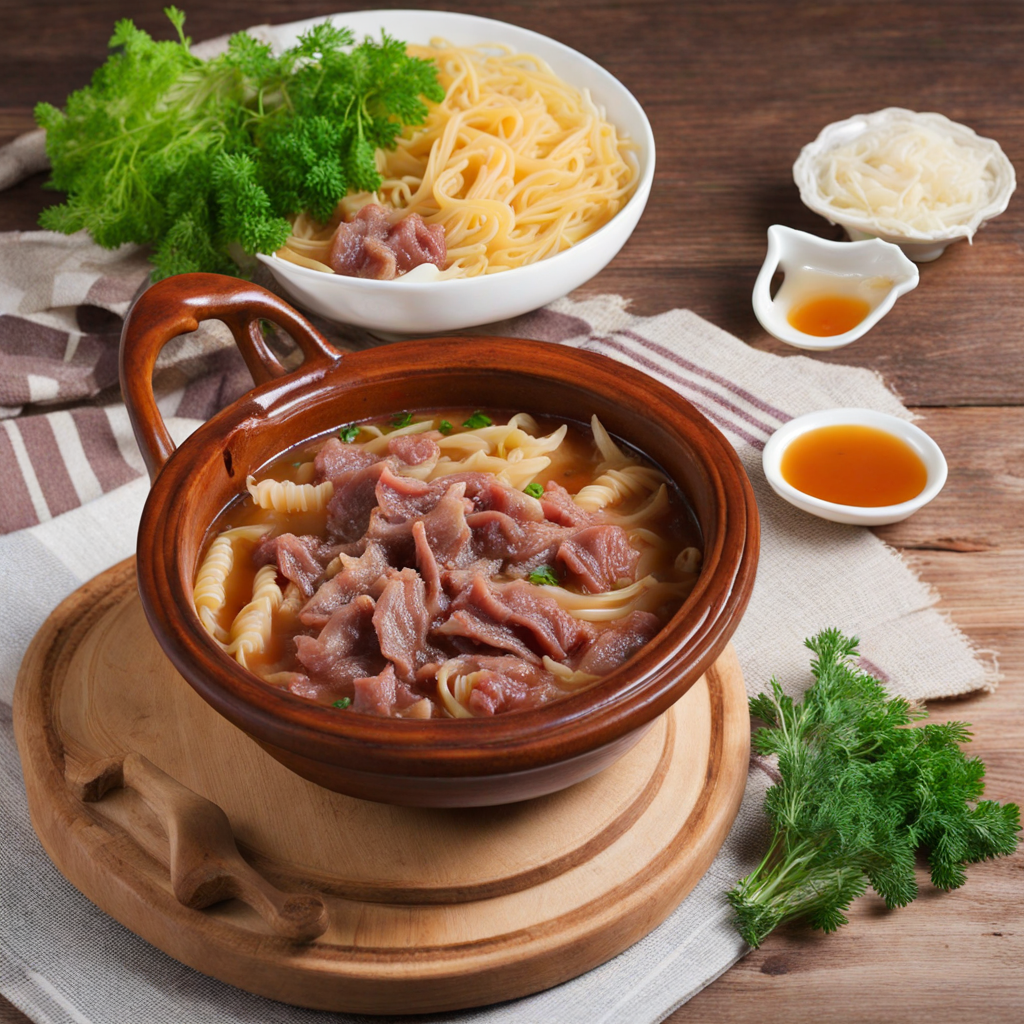Kespe
Kespe is a traditional Kazakh dish that showcases the rich culinary heritage of Kazakhstan, offering a unique blend of flavors and textures. This hearty dish features wide, hand-made noodles that are crafted from simple ingredients like flour, water, and salt. What sets Kespe apart is its savory broth, typically made from tender cuts of meat, such as lamb or beef, which are simmered for hours to extract maximum flavor. The broth is often seasoned with aromatic spices and herbs, enhancing the dish's depth and warmth, making it a comforting choice for any meal. The presentation of Kespe is as inviting as its taste. The noodles are served in a generous bowl, swimming in a rich and fragrant broth, often accompanied by fresh herbs like dill or cilantro for an added layer of freshness. Additionally, it is common to include vegetables such as carrots and onions, which not only contribute to the overall flavor but also add vibrant color to the dish. The combination of tender meat, chewy noodles, and flavorful broth creates a satisfying experience that warms the soul, especially during colder months. For those seeking to explore new culinary horizons, Kespe offers a delightful taste of Kazakhstan's rich history and culture. Whether enjoyed as a comforting family meal or at a festive gathering, this dish encapsulates the essence of Kazakh hospitality. Each bite tells a story of tradition, making it a must-try for anyone looking to expand their palate and experience the authentic flavors of Central Asian cuisine.
How It Became This Dish
Origin of Кеспе Кеспе, a traditional dish from Kazakhstan, showcases the rich culinary heritage of the nomadic peoples of the Central Asian steppes. The dish is believed to have originated among the Kazakh nomads, who relied heavily on livestock for sustenance. The primary ingredients of Кеспе include flat noodles made from wheat flour, meat (usually mutton or beef), and a rich broth, which reflects the nomadic lifestyle that emphasized portability and the use of readily available resources. Historically, the preparation of Кеспе is closely tied to the seasons and the migration patterns of the herders. In the summer months, when herds were moved to pasture, meals were often made from freshly sourced ingredients. In contrast, during the harsh winters, dried meats and preserved foods became staples. The ability to create hearty and nourishing meals like Кеспе was essential for survival in the extreme climates of Kazakhstan. \n\n Cultural Significance Кеспе is more than just a meal; it holds a significant place in Kazakh culture and social gatherings. The dish is often prepared during important events, such as weddings, holidays, and family reunions. Its communal nature brings people together, as it is typically served in large bowls, encouraging sharing and togetherness. This tradition underscores the value of hospitality in Kazakh culture, where sharing food is seen as a gesture of goodwill and friendship. In addition, Кеспе is imbued with symbolic meanings. The act of preparing and serving the dish often represents the nurturing aspect of Kazakh society, where the role of the host is to provide for and care for guests. It reflects the values of community and kinship that are central to the Kazakh way of life. Moreover, the dish is often accompanied by traditional beverages, such as kumys (fermented mare’s milk) or tea, further enhancing its cultural relevance. \n\n Ingredients and Preparation The traditional preparation of Кеспе involves several steps that highlight the skills of the cook. The flat noodles, known as "kuyrdak," are made from a simple dough of flour, water, and salt, rolled out thinly and cut into strips. This method can be traced back to the ancient nomadic traditions of making bread-like foods that are easy to cook and consume on the go. The broth is typically made by boiling chunks of meat with onions, carrots, and spices such as black pepper and bay leaves. The long cooking time allows the flavors to meld together, resulting in a rich and hearty soup. Once the meat is tender, the noodles are added to the pot, allowing them to absorb the flavorful broth. Various regional variations exist, with some adding local vegetables or herbs, reflecting the diverse agricultural practices across Kazakhstan. \n\n Regional Variations As Kazakhstan is a vast country with diverse landscapes and cultures, Кеспе has developed numerous regional variations. Each region incorporates local ingredients and culinary techniques, leading to unique interpretations of the dish. For instance, in the mountainous regions, you might find Кеспе with added wild herbs or mushrooms, while in the plains, the focus might be on the meat and broth, with less emphasis on vegetables. In urban areas, Кеспе has adapted to modern tastes and cooking methods. Many restaurants now offer its version with a contemporary twist, incorporating fusion elements from other cuisines. This evolution reflects the changing dynamics of Kazakh society, where traditional dishes are celebrated while also being open to innovation and experimentation. \n\n Modern-Day Relevance In contemporary Kazakhstan, Кеспе remains a beloved dish, serving as a reminder of the country’s rich cultural heritage. It is commonly found at family gatherings, celebrations, and in restaurants, where it is often featured as a signature dish. The revival of interest in traditional foods has been fueled by a growing movement to preserve and promote Kazakh culinary traditions, particularly among the younger generations. Moreover, Кеспе has gained recognition beyond Kazakhstan's borders, as globalization has allowed for the dissemination of Kazakh cuisine to the international stage. Food festivals, cultural events, and even culinary competitions have highlighted Кеспе, allowing it to gain appreciation from diverse audiences. This exposure not only celebrates the dish itself but also educates others about Kazakh culture and history. \n\n Conclusion: A Culinary Heritage Кеспе is more than just a dish; it is a symbol of the resilience and adaptability of the Kazakh people through centuries of change. Its rich flavors, communal nature, and cultural significance make it an integral part of Kazakhstan’s culinary landscape. As the country continues to evolve, Кеспе stands as a testament to the enduring traditions of the nomadic lifestyle, celebrating the past while embracing the future. Through this dish, generations of Kazakhs have maintained a connection to their heritage, ensuring that the stories and customs associated with Кеспе live on. As it finds its place in both traditional and modern kitchens, the dish continues to foster community, express identity, and preserve the essence of Kazakh culture for years to come.
You may like
Discover local flavors from Kazakhstan







